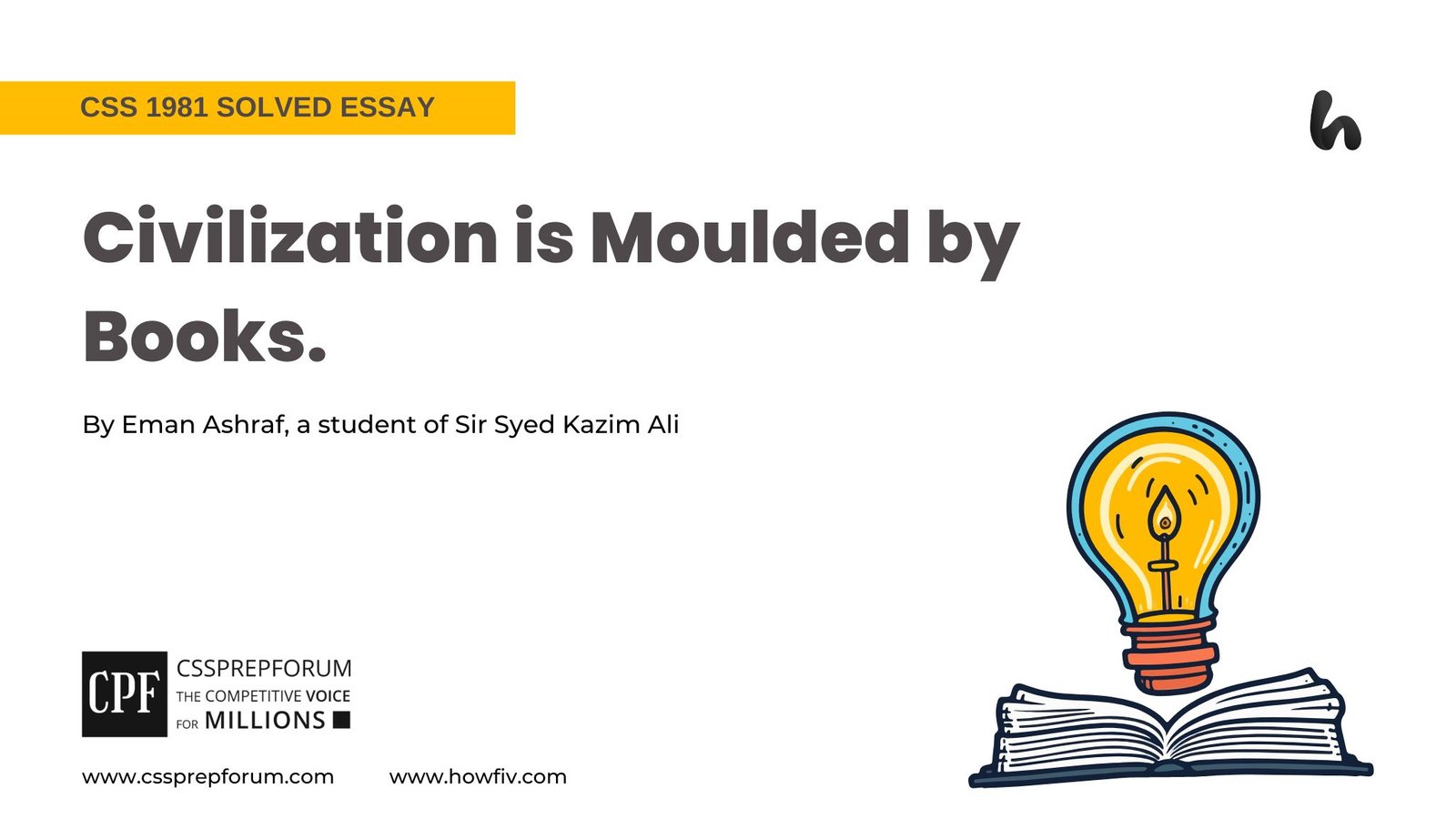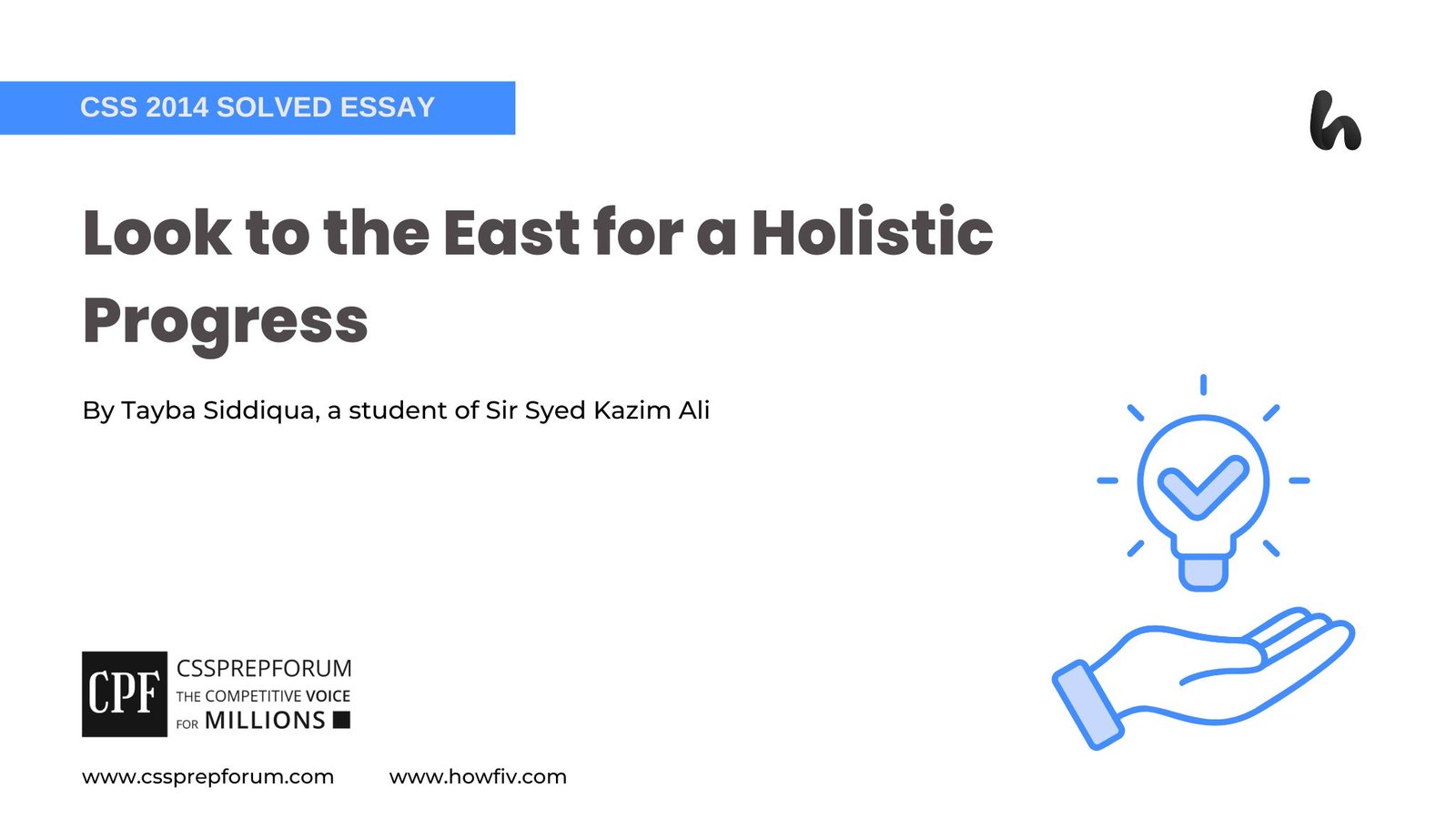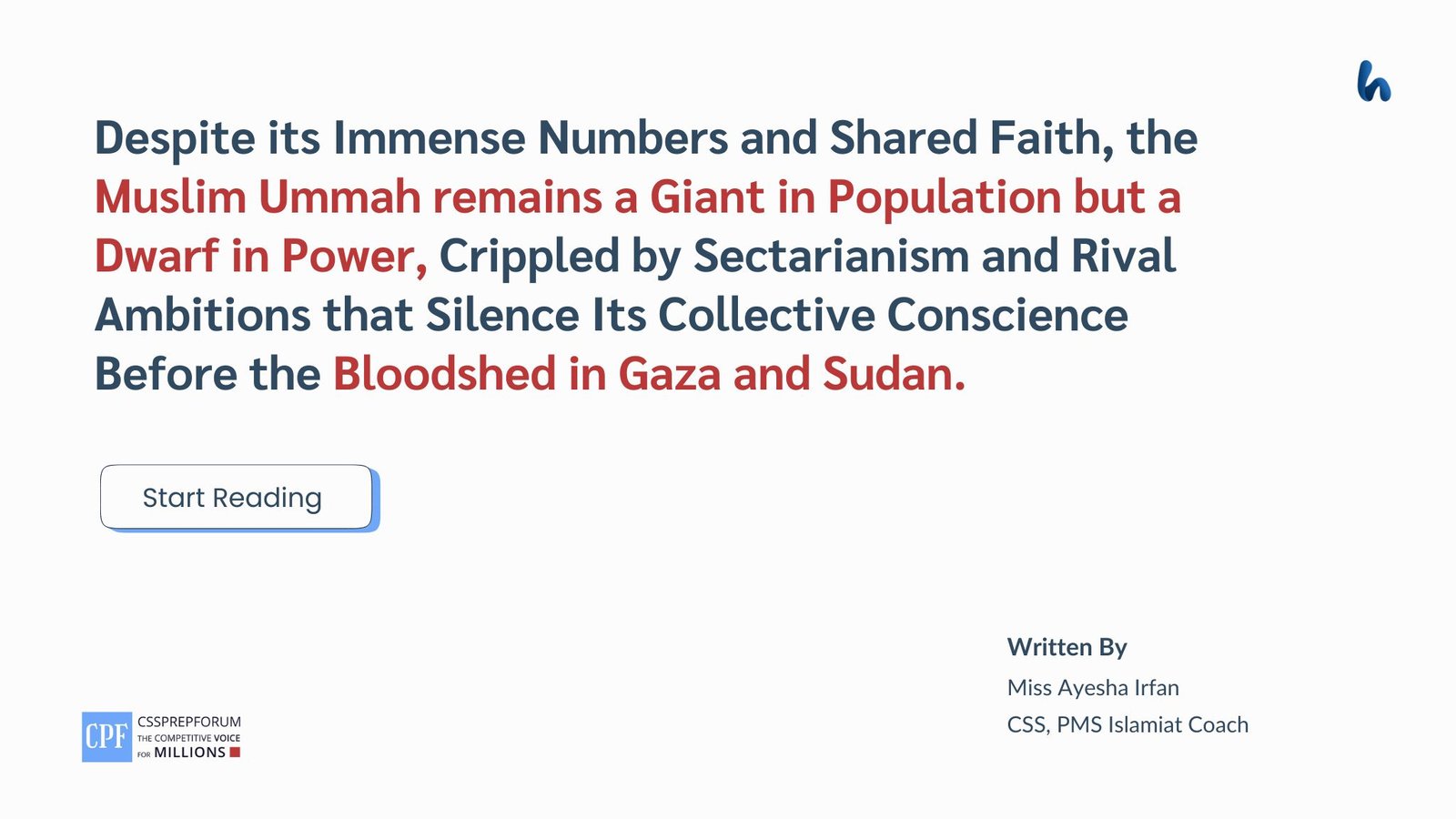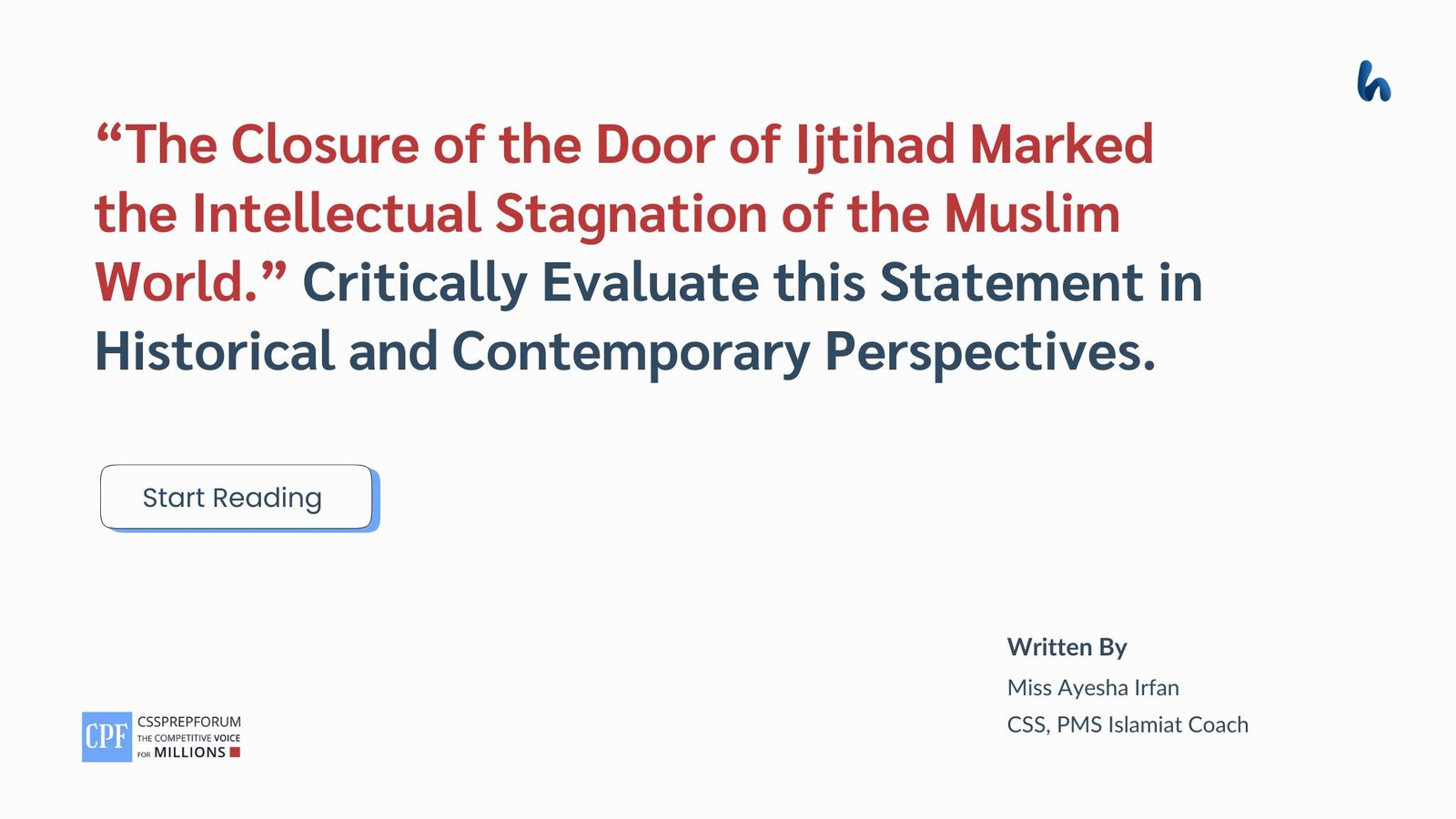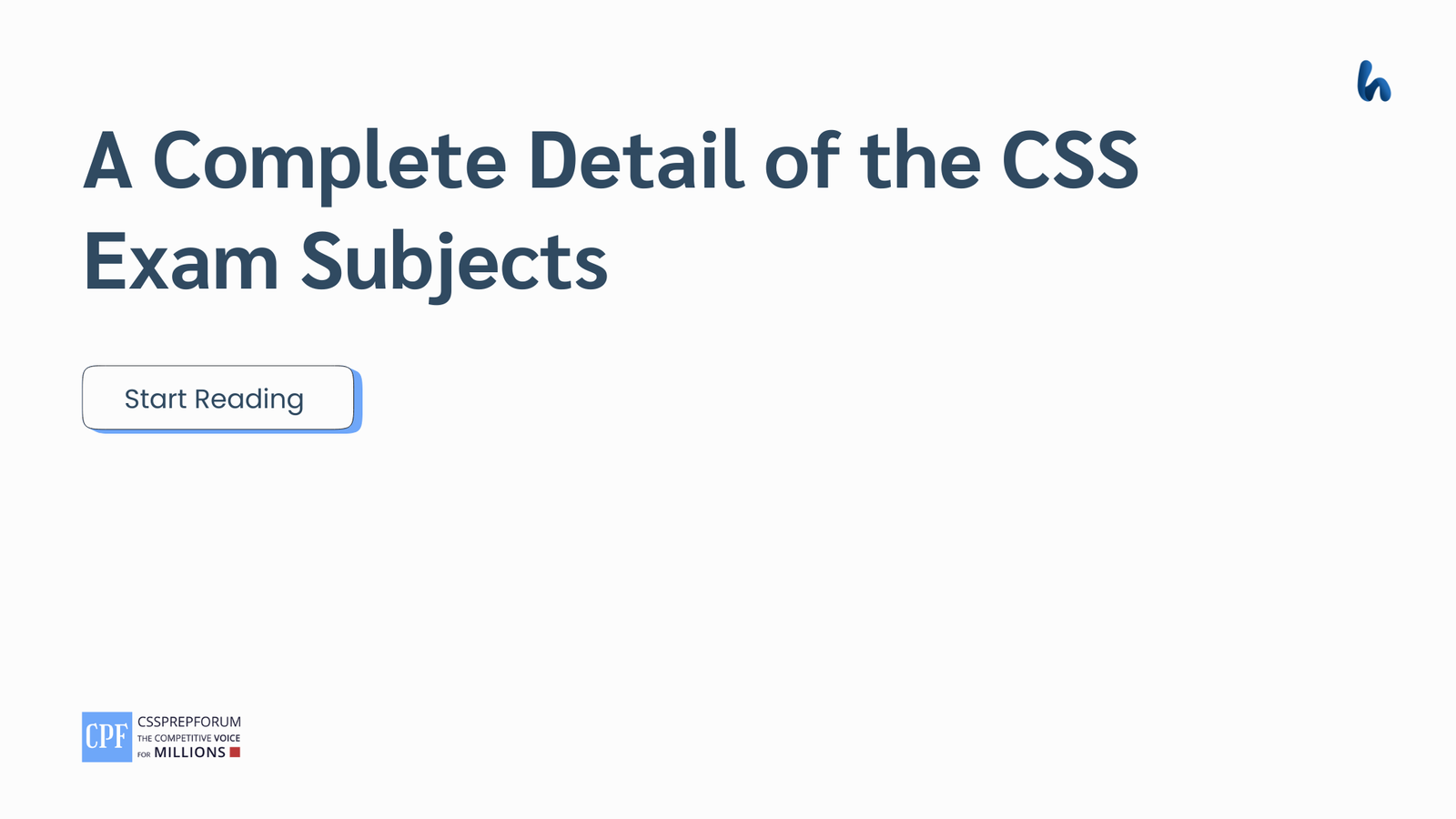CSS Current Affairs | Barriers to Effective Governance in Baluchistan
The following question of CSS Curent Affairs is solved by Amna Sehrish under the supervision of Howfiv’s Pakistan Affairs and Current Affairs Coaches. She learnt how to attempt 20 marks question and essay writing from Sir Syed Kazim Ali, Pakistan’s best CSS and PMS English essay and precis teacher with the highest success rate of his students. This solved past paper question is attempted on the pattern taught by Sir to his students, scoring the highest marks in compulsory and optional subjects for years, and uploaded to help aspirants understand how to crack a topic or question, how to write relevantly, what coherence is, and how to include and connect ideas, opinions, and suggestions to score the maximum.

Outline
1-Introduction
2-Historical Context
3-Contemporary Balochistan
4-Key Governance Challenges
- Political representation and autonomy issues
- Economic management and resource allocation difficulties
- Lack of transparency and accountability
- Weak institutional capacity
- Security issues and insurgency
5-Barriers to Effective Governance
- Poverty and underdevelopment
- Education and healthcare deficiencies
- Political instability
- Infrastructure deficits
- Limited private-sector participation
- Socioeconomic disparities
6-What pragmatic steps should be taken to make the province prosperous?
- Need for a comprehensive approach involving multiple stakeholders
- To make and implement effective policies
- To ensure peace
- Equal resource distribution
7-Conclusion

Answer to the Question
Introduction
In southwest Pakistan, Baluchistan, the biggest province, deals with many issues and is very complex. The province is among the nation’s most undeveloped and marginalized worldwide. Its boundaries are geographically with Iran to the west and Afghanistan to the north. Deserts, rocky mountains, and a lengthy coastline along the Arabian Sea characterize its enormous region. This area poses special problems for government and economic growth, granted abundant natural resources like energy and minerals; many socioeconomic measures show that Baluchistan is behind other Pakistani regions. Having, for example, the nation’s highest rates of neonatal and maternal mortality, lowest rates of literacy, and poverty. A major contributing element to the problems with Baluchistan’s government is the ethnic and regional disputes.
Historical context
Pre-partition Baluchistan demanded political autonomy and representation. Baluchistan has a convoluted administration shaped by tribal traditions, colonial legacies, and contemporary challenges due to its key location and rich history. In Baluchistan, tribes led by strong Sardars organize society. Their domain control made them vital to local administration. Tribal structure hindered Baluchistan’s efforts to form a modern state. Baluchistan’s administration was forever changed by colonialism. Princely and British kingdoms emerged from Baluchistan in the 19th century. The 1893 Durand Line deal is similarly contentious. The colonial authorities tried to merge tribal strength and control via a well-organized indirect rule system, where the Sardars maintained order. After independence from Britain, Baluchistan had similar management issues. Resource exploitation, notably mineral and natural gas discovery has raised governance problems. Resource ownership, wealth disparity, and environmental problems slow government efficiency.
Contemporary Baluchistan
Baluchistan faces several modern government issues. Baloch nationalist movements persist because they symbolize previous grievances and desires for autonomy. Baloch leaders demanded independence in 1947, and the government seldom employed military force to quash these disturbances. After the Pakistani military took over the Kalat monarchy in 1948, Baluchistan joined Pakistan. Other modern movements, like the 1970s Baloch revolt led by Nawab Khair Bux Marri, want political involvement and independence. Baloch nationalist movements have long desired self-sufficiency and autonomy over the province’s resources. Baluchistan believes the federal government’s control over its resources and politics has hampered its progress.
Key Governance Challenges
- Political Representation and Autonomy:
Tribal customs and sovereignty are deeply ingrained in Baluchistan’s history. The area was never fully included in the British Indian Empire, and efforts to centralize government were resisted even after partition. Baloch nationalist groups arose for more autonomy and management over their issues. Exploration of resources—natural gas in particular—and finding minerals- made governance problems even more complex. Disagreements over resource ownership, income sharing, and environmental issues increased the difficulties of efficient government.
- Economic Management and Resource Allocation:
In Baluchistan, resource allocation and economic management are important governance challenges. The province is rich in gold, copper, and gas. It’s Pakistan’s poorest and least literate province. Several factors cause Baluchistan’s economic issues. First, political unrest and violence have plagued the province for years. This hinders investment and economic growth. Remoteness and underdevelopment hampered Baluchistan’s economy. Water, power, roads, and other necessities are absent. Growing the economy and selling things is hard. Pakistan developed economic initiatives in Baluchistan. No effort has proven very successful. Baluchistan requires a more holistic and long-term economic development strategy.
- Lack of transparency and accountability:
The Baluchistan government’s lack of accountability and transparency hinders the administration. It becomes more difficult to manage the equal distribution of resources and make the government answerable. Serious and multi-dimensional consequences in Baluchistan are appearing at high rates. Corruption is another factor that obviously hinders development programs by bringing the money down for education and healthcare. Baluchistan’s stubbornness is not new but has deep roots in historical, economic, and political factors. It is now important for the administration, local societies and communities, and the federal and provincial governments to work together and to create a sense of responsibility.
- Weak institutional capacity
It has become a difficult task for the Baluchistan administration to start some initiatives for economic development. Social disparity is continuously increasing; development is hampered due to institutional incapacity. Institutional weakness limits Baluchistan’s education. Inadequate facilities and teaching materials and a lack of quality teaching staff have halted high-quality education. Health care has comparable challenges. Infrastructure, medical personnel, and resources shortages endanger public health.
- Security Issues and Insurgency:
Insurgency and security worries are the main causes of governance problems in Baluchistan. Decades of bloodshed and unrest have been brought about by the sectarian conflict, terrorism, and Baloch nationalism movement. Baloch nationalists have assaulted both security personnel and citizens who want Baluchistan to become independent. A serious security problem in Baluchistan is the Sunni-Shia conflict. The province is mostly Sunni, with a large Shia minority. Hundreds of individuals have died in recent years amid Sunni-Shia sectarian conflict.
What are the main Barriers to effective governance in Baluchistan?
- Poverty and Underdevelopment:
A country with sharp differences is Baluchistan. This naturally wealthy area’s inhabitants are among the nation’s poorest. The main issues confronting Baluchistan are poverty and underdevelopment, which significantly negatively affect the lives of its people. The biggest province in the nation by area is beset by several political, social, and economic problems that have exacerbated its underdevelopment and extreme poverty. Numerous demographic groups reside in rural locations with restricted access to healthcare, education, and basic amenities. Among the greatest rates of poverty in Pakistan are found there.
- Education and Healthcare:
Provincial education and healthcare are in dire circumstances. Female literacy rates in the province are astonishingly low. The 2018-19 Pakistan Social and Living Standards Measurement Survey found 43.6% literacy in the province, below the national average. Female literacy is 24.6%, and there is a gender gap. Unprepared instructors, an outdated curriculum, and a lack of teaching resources plague Baluchistan’s education. These impair student learning and national competitiveness. Many Baluchistan schools lack power, water, and sanitation. Rural school deficits worsen it. Poor healthcare facilities cause patients to travel far for minor procedures, delaying treatment. Skilled worker shortages lower healthcare quality. It increases maternal and neonatal deaths. Baluchistan has high baby and mother mortality, malnutrition, and avoidable illness. Poor water and sanitation affect health. History, politics, and geography impact Baluchistan’s healthcare and education.
- Political Instability
A deep-rooted feeling of political instability characterized Baluchistan’s past. One of the basic issues fueling political instability is the historical exclusion of the Baloch people in the national political arena. Federal government answers to these issues have drawn criticism on a regular basis. The area is unstable and unrestful because of the absence of political agreement and the incapacity to resolve the Baloch people’s complaints. The peace, security, economic growth, and foreign investment in the province are all impacted by this instability.
- Infrastructure Deficits
Infrastructure deficiencies exist in many areas of Baluchistan, including electricity, education, and transportation. Because of its extensive desert terrain, the province presents infrastructure construction challenges. Trade and communication are hampered by underdeveloped or nonexistent ports, railroads, and highways. The energy industry also battles shortages of electricity and clean water, which lowers local quality of living. Deficits in the educational infrastructure worsen social inequality and restrict access to top-notch instruction and skill development. An inadequate infrastructure slows down economic expansion. These problems have to be addressed by any provincial development plan.
- Limited private-sector participation
Low participation of the private sector impedes employment generation and economic progress. Many private companies have not been able to operate in Baluchistan due to security issues. This restricts employment prospects and economic diversification that may strengthen Baluchistan’s economy. Engagement of the private sector is discouraged by the absence of necessary infrastructure and services. The lack of utilities, energy, and transportation makes operations and company formation challenging. Investment is discouraged by the hostile business climate that restricts private companies in the region.
- Socioeconomic Disparities
A huge socioeconomic disparity is emerging in Baluchistan. Despite having natural resources, the province is facing rampant unemployment; the poverty rate is increasing daily, and the province is witnessing a decline in human development indicators as well. Gender discrimination, political instability, and infrastructural constraints impede economic growth and resource distribution along with increasing social inequality. These barriers are significantly elevating stress in the region.
What pragmatic steps should be taken to make the province prosperous?
It is high time Baluchistan addressed these challenges and hurdles. No doubt it is a huge task, but it is not impossible. There is a dire need for the government, civil societies, and international organizations to work together for the betterment of this beautiful land. There must be some strategy for tackling these issues. The government should not only make policies but also implement them properly, especially in the health and education sectors. By solving educational issues, the province’s populace might become aware of their rights and values. Their quality of life can be enhanced, and the economy may flourish.
There must be some policies for enhancing security measures. It is a fact that the province is under many troublesome circumstances and security issues are rubbing salt in the wounds of the region. administration should take some pregmapragmaticres for solving the security issues.
Moreover, local involvement should also be addressed by the government and they must take account of history and culture of Balochistan. It should be given proper and equal resources and rights same as of other provinces. Such problems should be resolve seriously sothat the region may prosper. Certainly, if these problems are tackled seriously then the country see a new look of the province.
Critical Analysis
In critical overview, Balochistan is surrounded by a lot of problems, including political chaos, insufficient infrastructure, and social disparity. Undoubtedly, a comprehensive strategy in which political reconciliation, making new infrastructure, and socioeconomic disparities are included is required. And it’s a need for Balochistan to have some long-term planning, investment, and efficient government. By ignoring such issues, the province might push itself into the darkness.
Conclusion
In a nutshell, Political, historical, and economic issues constrain Baluchistan’s governance. The intricacy of tribes and colonial legacies lead to ethnic bloodshed and political instability. Poverty, ill healthcare, and low literacy exacerbate development issues. It will need a varied approach to get over these obstacles. Baloch people may feel included, and old problems may be resolved with political autonomy and engagement. Make use of the natural resources of Baluchistan to advance the economy and increase profits. Investing in infrastructure, healthcare, and education improves life and keeps growth going. Resources must be maximized, and corruption must be eliminated through transparent and responsible governance. Reform of institutions and community decision-making might advance development. A settlement of these problems will stabilize Pakistan and strengthen Baluchistan.

CSS Solved Past Papers’ Essays
Looking for the last ten years of CSS and PMS Solved Essays and want to know how Sir Kazim’s students write and score the highest marks in the essays’ papers? Then, click on the CSS Solved Essays to start reading them.
CSS Solved Essays
CSS Solved General Science & Ability Past Papers
Want to read the last ten years’ General Science & Ability Solved Past Papers to learn how to attempt them and to score high? Let’s click on the link below to read them all freely. All past papers have been solved by Miss Iqra Ali & Dr Nishat Baloch, Pakistan’s top CSS GSA coach having the highest score of their students.
General Science & Ability Solved Past Papers


